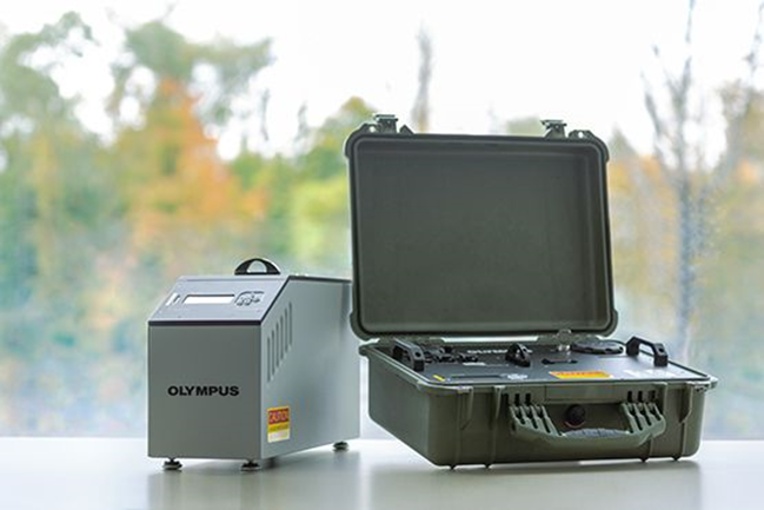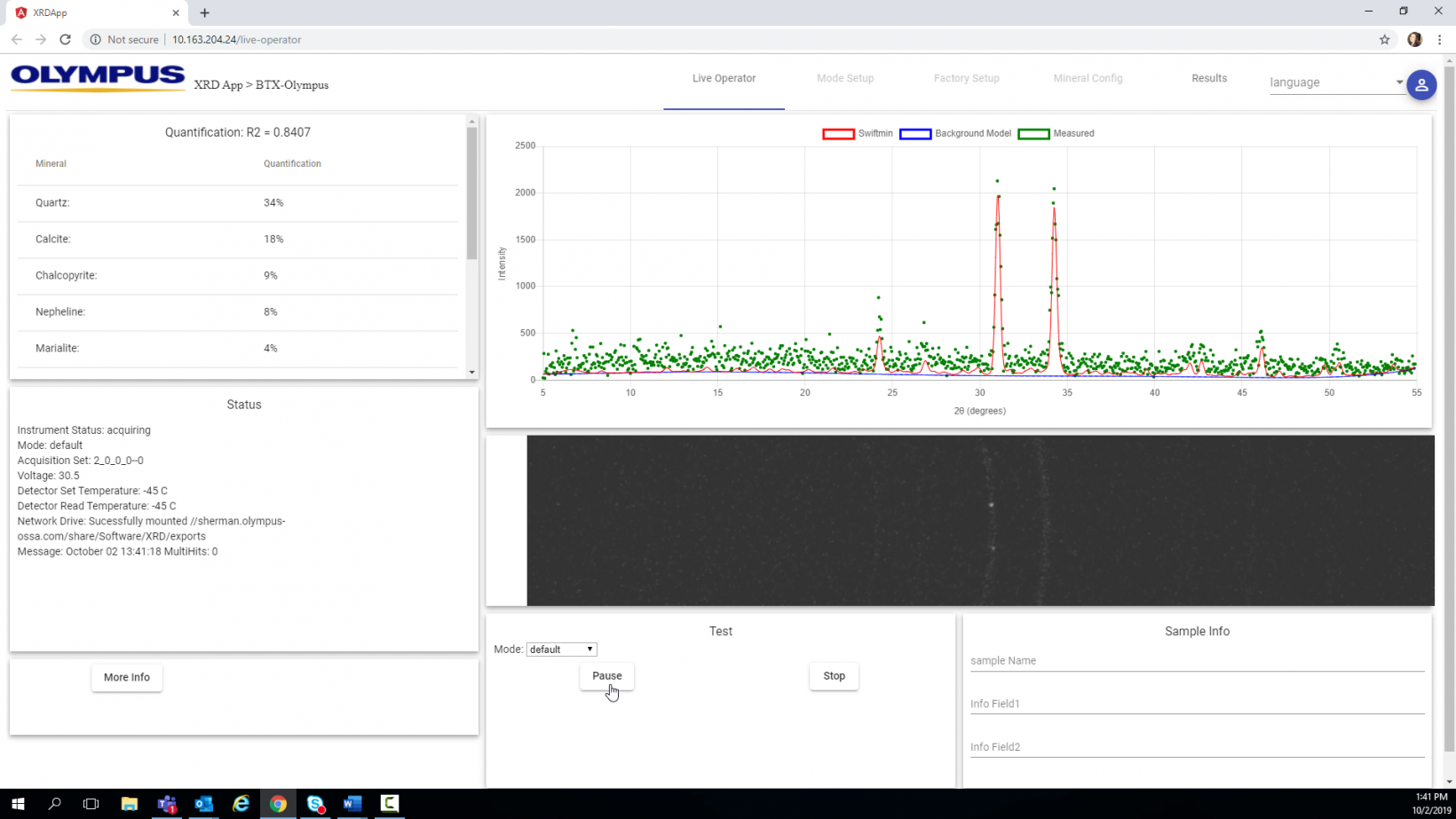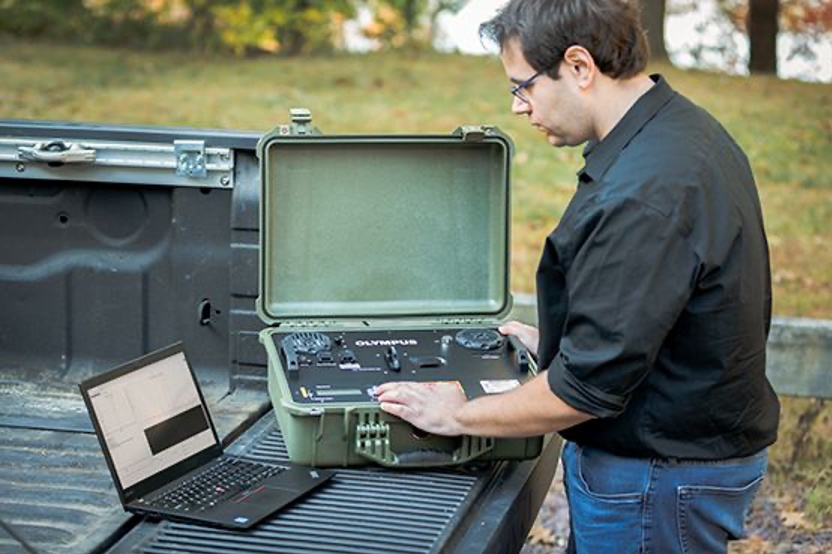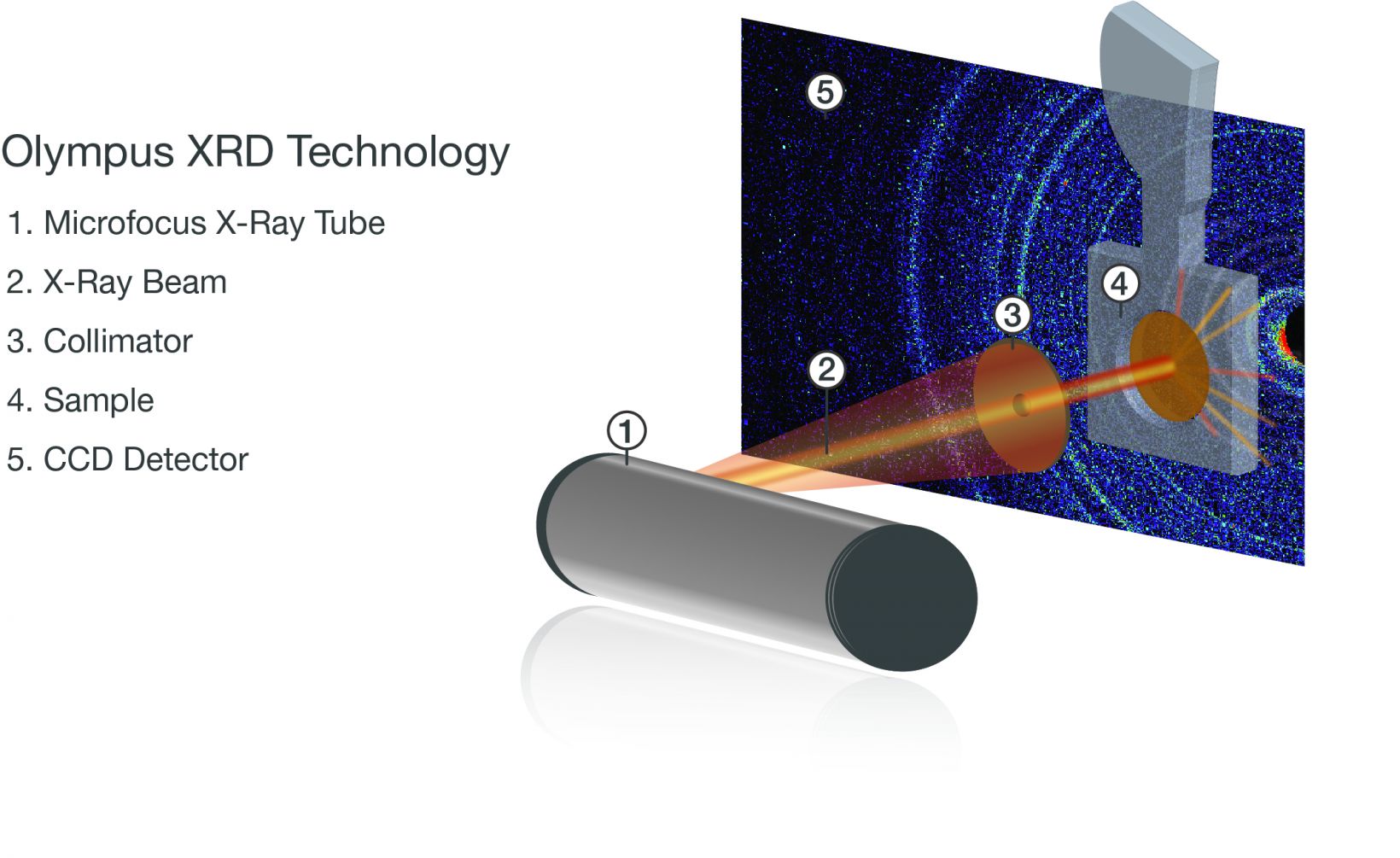X-ray diffraction, or XRD for short, is an analytical technique that provides information about the structure and phase ID of crystalline materials.
XRD can be used to identify single crystals and reveal their structure. Geologists find XRD particularly useful since it can be used to identify crystals present in a mixture, such as minerals in a rock. For minerals with variable formulas and structures, such as clays, XRD is the best method for identifying them and determining their proportion within a sample.
But how does XRD work? This blog post will dig into the science behind XRD and explain how it works in our field-portable XRD analyzers.
The Science Behind X-Ray Diffraction (XRD)
During XRD analysis, a beam of X-rays is directed toward a sample, and the scattered intensity is measured as a function of the outgoing direction. By convention, the angle between the incoming and outgoing beam directions is called 2θ, or 2-theta.

The angle between the incoming and outgoing beam directions is called 2θ (2-theta).
For the simplest possible sample, consisting of sheets of charge separated by a distance d, constructive interference (greater scattered intensity) is observed when Bragg's Law is satisfied: n λ = 2 d sin θ.
XRD Technology in Practice
XRD instruments like our next-generation TERRA™ II and BTX™ III XRD analyzers use this technology to provide fast, reliable mineralogy and phase analysis of major and minor components in real time directly on the analyzer.
Olympus XRD diffractometers also use a unique method to rapidly and easily collect and process XRD data, which enables us to make our XRD analyzers exceptionally compact and portable. Keep reading to learn more about our technique.

The BTX™ III benchtop XRD analyzer (left) and the TERRA™ II portable XRD analyzer (right) provide the power of large, complex laboratory systems in compact, lightweight designs.
How Olympus XRD Works
Conventional goniometer-based XRD instruments use a reflection geometry technique to process XRD data. As a result, the instruments are large, have many moving parts, and often require external cooling. Another drawback is that they require a large batch of sample for analysis. In the past, these limitations meant that XRD analysis always took place in a lab.
Our engineers moved XRD forward with a unique transmission geometry method where the X-ray beam passes through the sample.
This method requires no moving parts, enabling us to engineer the world's first commercial battery-operated, portable XRD (the successor is our new TERRA™ II instrument). Today, our XRD instruments continue to provide portability and ease of use, only requiring 15 mg of sample for analysis.
Once the sample is enclosed in the sample chamber, our XRD analyzers use a particle randomization method called powder liquefaction. With this method, our analyzers apply the constant piezo-induced frequency to the sample, which causes the powder to convect from top to bottom and rotate on its axis.
Within 30 seconds, every particle in the sample window will have passed through the X-ray beam in every possible orientation. As a result, our XRD instruments achieve 100% randomization—the most critical component of precise and accurate X-ray diffraction.
How to Achieve Quantitative Mineralogy Quickly and Easily
We made the XRD process as simple as possible so our customers can achieve quantitative mineralogy results quickly and easily. The process can be explained in just a few steps:
- Prep your sample. You can learn more about the easy sample prep steps in our blog post, Your Quick Guide to Fast Quantitative XRD Analysis
- Start your test, and the analyzer passes X-rays through the convecting sample in the window
- X-rays hit the sample and diffract at a range of 2-theta angles
- The CCD detector measures diffraction
- SwiftMin® automated phase ID and quantitative software shows the phase or mineral ID in real time directly onboard the analyzer or in the intuitive user interface

SwiftMin® software eliminates repetitive tasks with intuitive features, including one dashboard for data, preset calibrations, automatic data transfer, and easy data export.
Common XRD Applications
You can use these XRD results for a wide range of purposes. Common XRD applications include:
- Mining and ores
- Oil and gas
- Pharmaceutical
- Academia
- Space exploration
3 Unique Hardware Features in Olympus XRD Analyzers
In addition to time-saving software and simple sample prep, Olympus XRD is engineered with unique hardware components that make the instruments exceptionally reliable and precise:
- 2D X-Ray Diffractometer: Many XRD instruments use an X-ray detector that captures the photons coming off the sample in only one plane, or a 1D experiment. Our CCD-based XRD analyzers can collect a slice of the diffraction ring to help users understand if the sample was prepared correctly (particle statistics and/or preferred orientation of the crystals). This information can help you confirm that the quantitative data is accurate and representative.
- Energy Discrimination X-Ray Detector: Larger conventional XRD instruments typically cannot use an energy sensitive detector. Consequently, the detector is impacted by photons not used in the XRD experiment. Our XRD analyzers, on the other hand, remove photons not directly involved in the X-ray diffraction experiment, such as X-ray fluorescence photons, to offer a better signal-to-noise pattern.
- Cobalt and Copper Tube Options: Our XRD instruments come standard with a rugged cobalt (Co) target X-ray tube. This anode is preferred by geologists and mineralogists since it’s great at analyzing samples with high iron (Fe) content. But keep in mind that some applications, such as analyzing high manganese content, need a copper (Cu) target X-ray tube. We provide either anode so you can choose the best one for your application requirements.
Learn More About Field-Portable XRD Technology
This blog post is designed to give you a foundational understanding of X-ray diffraction and how it works in modern, field-portable analyzers. To learn more about the technology, watch this video about Olympus XRD next.
SwiftMin is a registered trademark of the MinEx CRC.
Related Content
Your Quick Guide to Fast Quantitative XRD Analysis
Out of this World: Olympus XRD on Mars
5 Advantages of Olympus XRD Analyzers over Conventional XRD Instruments
Get In Touch


